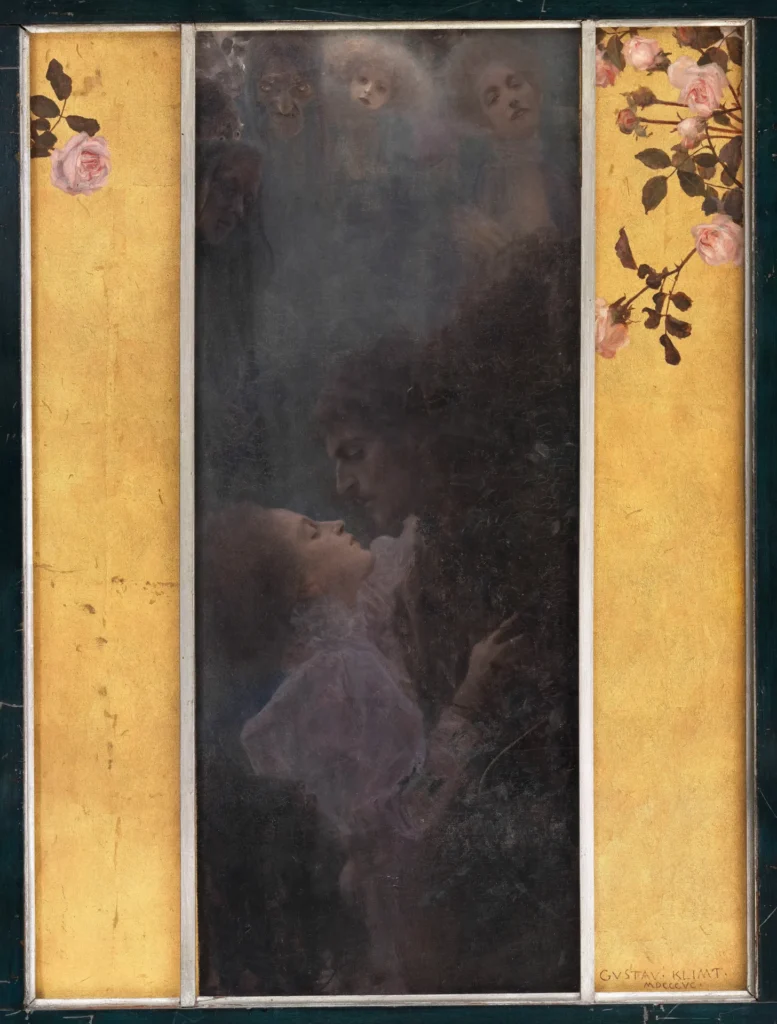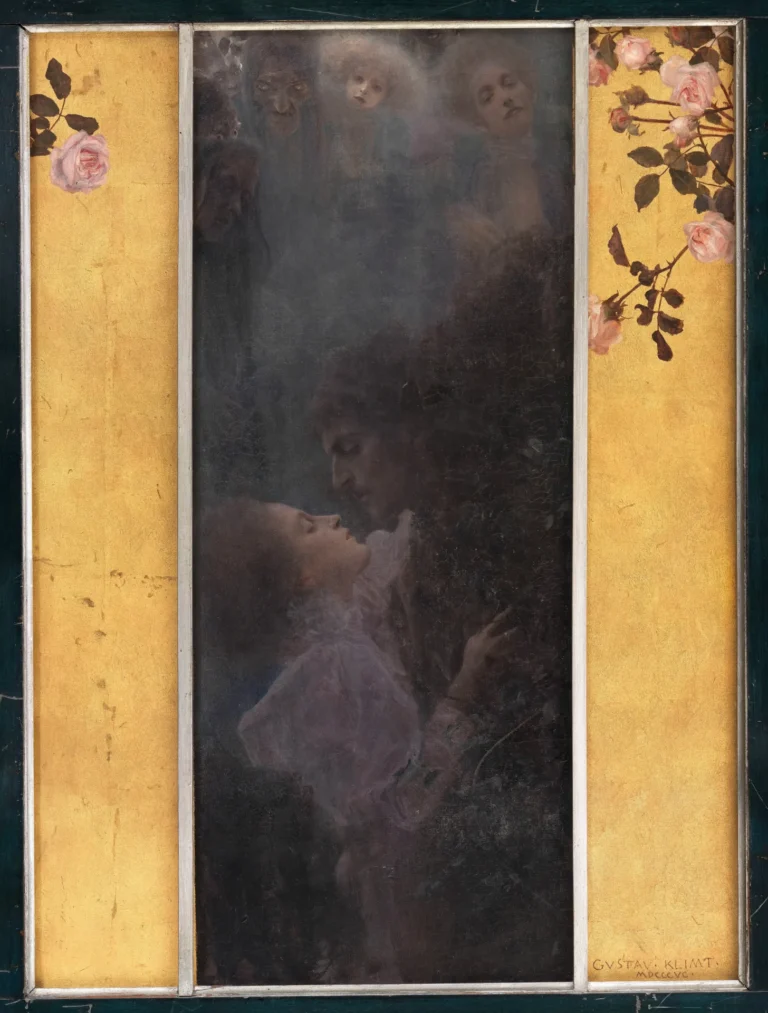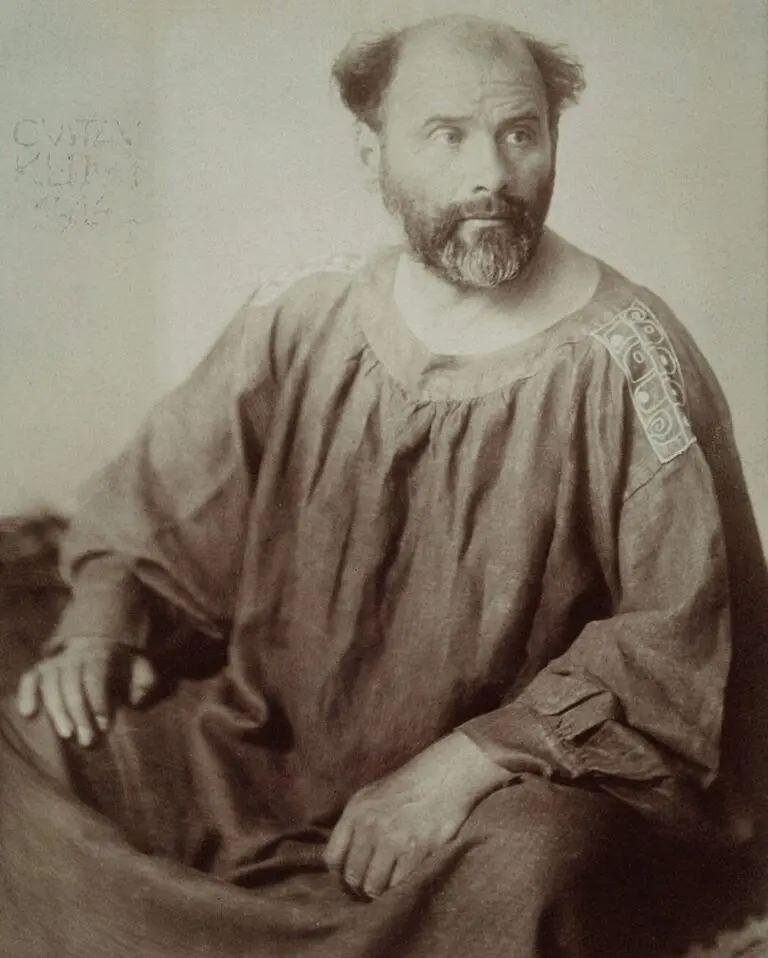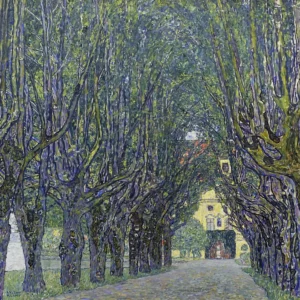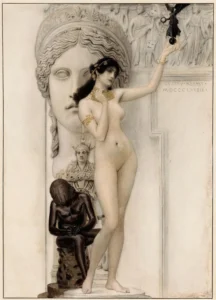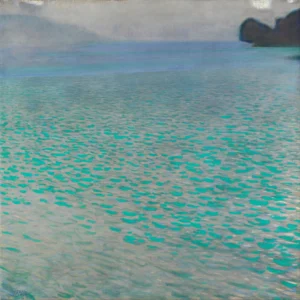Liebe (1895)
Liebe reflects Gustav Klimt's early explorations into Symbolism, featuring a couple at the focal point—a male figure exuding danger and a female figure in submission. The backdrop of three female heads illustrates the passage of time, representing youth, maturity, and aging. The lavish roses in the wide frame contribute to the work's romantic aesthetic, creating a meaningful relationship between the figures and their environment. This painting marks a critical moment in Klimt's journey towards integrating allegory and symbolism in his art.
Year 1895
About the Artwork
Liebe (Love) signifies a poignant moment within Gustav Klimt's artistic evolution. Created in 1895, a period marked by personal and cultural upheaval, the artwork encapsulates the duality of love and mortality. The male figure, often perceived as ruthless, represents a darker aspect of love, while the surrendering female figure hints at themes of vulnerability. The three heads symbolize the eternal truth of life's transience, echoing the larger existential questions of the time. This piece was part of Klimt's second portfolio for Gerlach's Allegories and Emblems, indicating its role in solidifying his unique approach to allegorical narratives. Liebe not only reveals Klimt's mastery in blending narrative and symbol but also invites viewers to ponder the delicate equilibrium between passion and the inevitability of aging and death.
Did You Know
Liked what you see? Add it to your collection.
Enjoyed reading? Share it.
... continued
Style and Period
'Love' is characterized by the Symbolism style, which was a dominant influence in Klimt's early works.
Composition and Symbolism
The painting depicts a complex scene that goes beyond a simple representation of love. At its center are two figures, often interpreted as a couple, but with the male figure appearing dangerous and ruthless, and the female figure seemingly surrendering to his embrace. Above them, Klimt painted three female heads representing the ages of a woman: youth, maturity, and old age. This element symbolizes the transience of life and the inevitability of aging and death.
Frame and Decoration
The painting is notable for its use of a wide, painted frame that takes up nearly half of the picture. This frame features naturalistic roses, which serve as a visual link between the realistic treatment of the figures and the flat color of the frame. The roses also add a romantic and symbolic layer to the work.
Artistic Technique
The artwork is executed in oil on canvas, measuring 60 x 44 cm. It is housed at the Kunsthistorisches Museum in Vienna, Austria.
Interpretation
The painting can be interpreted in several ways, including the transience of life against the backdrop of a passionate moment, and the idea of 'sweet death' in the name of love. The scene captures a moment where life flashes before one's eyes, symbolizing the intensity and fleeting nature of human passion.
Context in Klimt's Work
'Love' is part of Klimt's second portfolio for Gerlach's Allegories and Emblems and marks an early development in his use of allegorical and symbolic figures, a theme he would continue to explore in his subsequent works.




